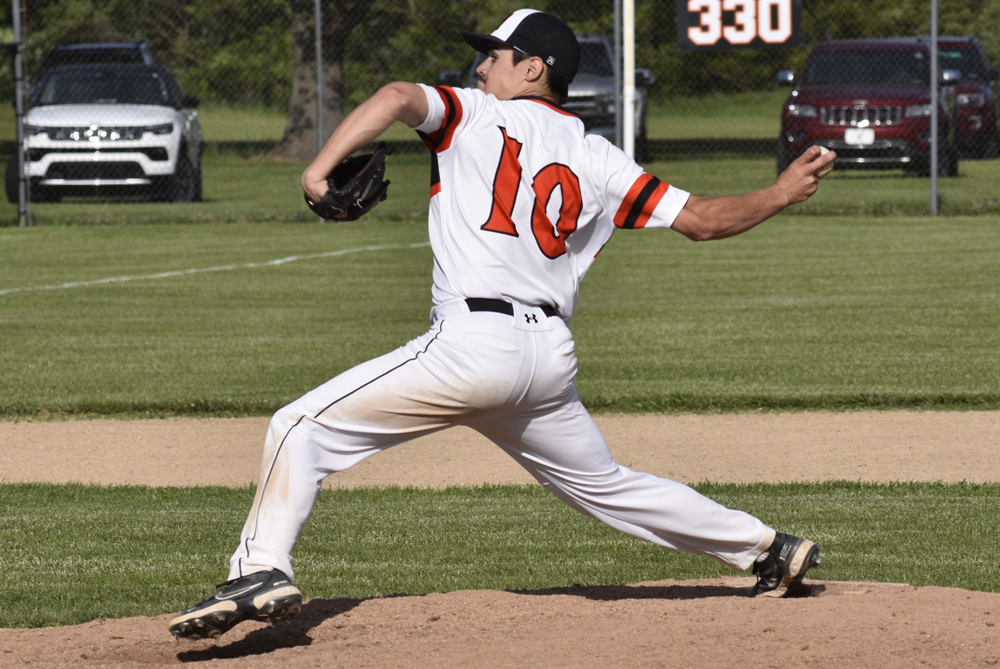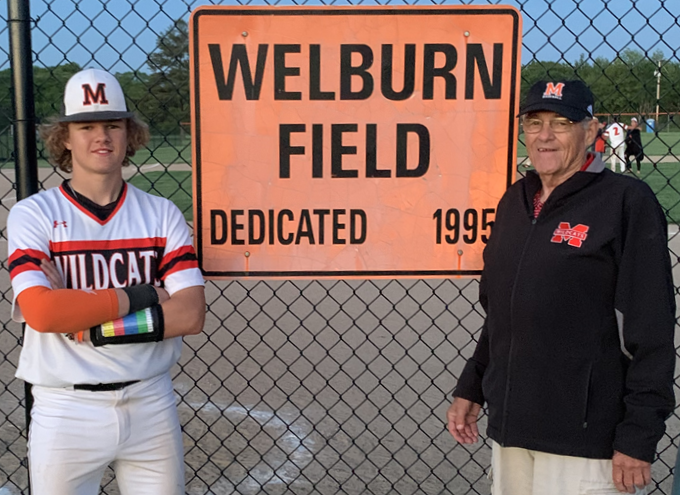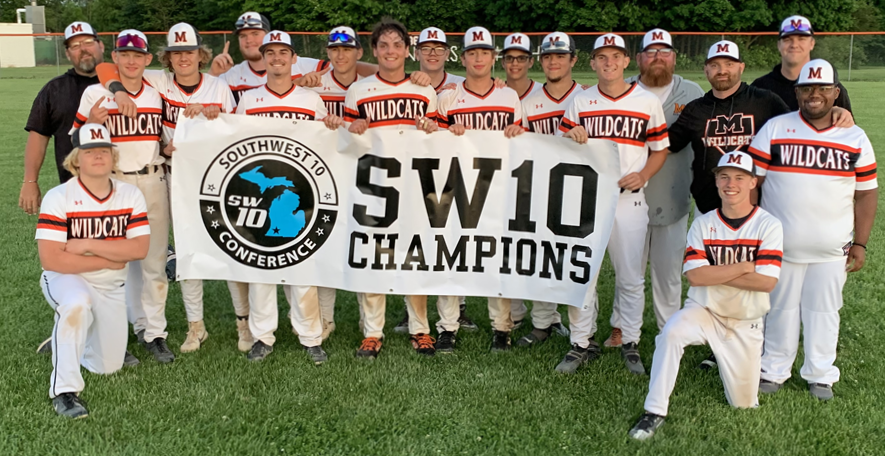
New Math: Division & Multiplication Problems
July 25, 2017
By Jack Roberts
MHSAA Executive Director
This is the second part in a series on MHSAA tournament classification, past and present, that will be published over the next two weeks. This series originally ran in this spring's edition of MHSAA benchmarks.
High school tournament classifications went viral before there was social media and most of us knew what “viral” meant.
Much as a virus infects computers today or has created epidemics of disease around the world for centuries, high school tournament classification – once introduced – tends to spread uncontrollably. Once started, it tends to keep expanding and rarely contracts.
While we are still some distance from providing every team a trophy as a result of expanding high school tournament classification across the country, there is criticism nevertheless that we are headed in that direction – a philosophy which is supposed to exist only in local youth sports for our youngest children.
Michigan could be blamed for all this. Michigan is generally accepted as the first state to provide different classifications for season-ending tournaments for different sized schools. It started a century ago. Today, every state has various classifications for its tournaments in most if not all sports. And it is a bit ironic that Michigan – creator of the classification chaos – more than most other states has kept the number of tournament classes or divisions under control.
Yes, there is evidence that tournament classifications have expanded over the years in Michigan, especially with the relatively recent introduction of tournaments in football and the late 1990s’ move from classes to divisions in most MHSAA tournaments. But the MHSAA Representative Council has held true to its word when it expanded the playoffs for football from four classes to eight divisions: this is needed because of unique factors of football, factors that exist in no other sport; and all other sports should be capped at a maximum of four classes or divisions.
Kentucky is the preeminent defender of single-class basketball. All of its 276 high schools compete for the single state championship for each gender. In Indiana, there are still open wounds from its move in 1998 from one to four classes for its 400 schools in basketball.
Multi-class tournaments have tended to increase the number of non-public school champions, which some states are trying to lower through enrollment “multipliers,” and also tend to increase the number of repeat champions, which some states are trying to affect with “success factors” which lift smaller schools into classifications for larger schools if they take home too many trophies.
While there is considerable evidence that state tournaments do as much bad as good for educational athletics, state associations persist in providing postseason tournaments because, on balance, the experiences are supposed to be good for student-athletes. And once we reach that conclusion it is just a small leap to believe that if the tournaments are good for a few, they must be better for more – which leads to creating more and more tournament classifications. One becomes two classes, then three, then four and so forth.
While the argument is that more classifications or divisions provides more students with opportunities to compete and win, it is undeniable that the experience changes as the number of tournament classifications expands. It is not possible for state associations to provide the same level of support when tournament classifications expand to multiple venues playing simultaneously. For example, there is less audio and video broadcast potential at each venue, and less media coverage to each venue. Focus is diluted and fans diminished at each championship.
No one can argue reasonably that today's two-day MHSAA Football Finals of eight championship games has the same pizazz as the one-day, four-games event conducted prior to 1990.
In some states the number of divisions has grown so much that it is difficult to see much difference between the many season-ending state championship games and a regular-season event in the same sport.
It is a balancing act. And Michigan has been studying that balance longer than any other state, and charting a steadier course than most.
Addition by Division
The shift to Divisions for MHSAA Tournament play in numerous sports has added up to a greater number of champions for teams and individuals across the state. Following are the sports currently employing a divisional format, and the procedures for determining enrollment and classification.
In 23 statewide or Lower Peninsula tournaments, schools which sponsor the sport are currently divided into nearly equal divisions. They are:
- Baseball - 4 Divisions
- Boys Bowling - 4 Divisions
- Girls Bowling - 4 Divisions
- Girls Competitive Cheer - 4 Divisions
- LP Boys Cross Country - 4 Divisions
- LP Girls Cross Country - 4 Divisions
- LP Boys Golf - 4 Divisions
- LP Girls Golf - 4 Divisions
- Ice Hockey - 3 Divisions
- Boys Lacrosse - 2 Divisions
- Girls Lacrosse - 2 Divisions
- Boys Skiing - 2 Divisions
- Girls Skiing - 2 Divisions
- LP Boys Soccer - 4 Divisions LP
- Girls Soccer - 4 Divisions
- Girls Softball - 4 Divisions
- LP Boys Swimming & Diving - 3 Divisions
- LP Girls Swimming & Diving - 3 Divisions
- LP Boys Tennis - 4 Divisions
- LP Girls Tennis - 4 Divisions
- LP Boys Track & Field - 4 Divisions
- LP Girls Track & Field - 4 Divisions
- Wrestling - 4 Divisions
Lists of schools for each division of these 23 tournaments are posted on MHSAA.com approximately April 1. Listings of schools in Upper Peninsula tournaments for their sports are also posted on MHSAA.com. The lists are based on school memberships and sports sponsorships in effect or anticipated for the following school year, as known to the MHSAA office as of a date in early March.
In football, the 256 schools which qualify for MHSAA 11-player playoffs are placed in eight equal divisions annually on Selection Sunday. Beginning in 2017, the 8-player divisions will be determined in a like manner on Selection Sunday as well, with 32 qualifying schools placed in two divisions.
Schools have the option to play in any higher division in one or more sports for a minimum of two years.
The deadlines for "opt-ups" are as follows:
- Applications for fall sports must be submitted by April 15
- Applications for winter sports must be submitted by Aug. 15
- Applications for spring sports must be submitted by Oct. 15
Subsequent to the date of these postings for these tournaments, no school will have its division raised or lowered by schools opening or closing, schools adding or dropping sports, schools exercising the option to play in a higher division, or approval or dissolution of cooperative programs.
When the same sport is conducted for boys and girls in the same season (e.g., track & field and cross country), the gender that has the most sponsoring schools controls the division breaks for both genders.

Marcellus Baseball Making History with 1st League Title, Perfect Regular-Season Record
By
Scott Hassinger
Special for MHSAA.com
May 28, 2024
MARCELLUS – Crowds have grown so big at Marcellus baseball games this spring that Don Price, the school's athletic director, had to hire extra gate help and make sure the athletic boosters had the concession stand well-stocked.
 The Wildcats have put together a memorable baseball season for this community of just more than 1,000 residents located in Cass County.
The Wildcats have put together a memorable baseball season for this community of just more than 1,000 residents located in Cass County.
Marcellus, ranked No. 8 in Division 4, ended its regular season last week at 27-0, which included capturing first place in the Southwest 10 Conference title with a 19-0 mark.
It was the first unbeaten regular season and conference title in the history of Marcellus' baseball program.
With all of that behind the team now, coach Christian Hutson is busily preparing his ballclub for Saturday's noon District Semifinal clash against Burr Oak. Marcellus, just 13-19 a year ago, features a roster that includes four seniors, a pair of juniors, one sophomore and seven freshmen.
"We're hoping to make a run, but first we have to get through a tough District at Centreville. We have to approach it one game at a time. Any team can beat you on any given day," Hutson said.
"Our seniors have gone through lots of growing pains. They've all been asked to play a huge role for us from a young age,” Hutson added. “Now it's all come to life and they are playing real baseball, making plays and picking one another up. Everything has finally come together for these kids.”
A strong pitching staff has been one of the biggest keys to the Wildcats' success. Senior Dawsen Lehew is 5-0 with one save, a 1.04 ERA and 33 strikeouts. Nathan Mihills, another senior, is also 5-0 with one save, a 2.66 ERA and 32 strikeouts and he starts at first base when freshman Cale Hackenberg takes the mound.
"Dawsen won't be outworked. He comes in day in and day out and gives his best performance," Hutson said. "Nathan is Mr. Reliable. He's the guy who stays after practice and makes sure everything is cleaned up and that the field is raked and there's no trash left in the dugout."
Mihills also fills the role of lead-off hitter and threw a no-hitter against Bangor.
"The juniors and seniors have been through the hardship of it all, but it's helped shape us to where we are now. Our freshmen are a great addition. We're all great friends. I'm not a bit scared of who the ball is hit to because I know they'll come up with a good play,” Mihills said. “I'm a lefty and I feel pretty consistent when my curveball is on. Our coaches do a great job preparing us for game situations."
 Lehew agrees with his senior teammate: "Our confidence allows us to play with high energy. We've been hitting the rock very well and our pitching has been real solid. We have a new pitching coach (Ryan Coffey) who has helped me with my velocity and control. I feel like everything is flowing really well at this point."
Lehew agrees with his senior teammate: "Our confidence allows us to play with high energy. We've been hitting the rock very well and our pitching has been real solid. We have a new pitching coach (Ryan Coffey) who has helped me with my velocity and control. I feel like everything is flowing really well at this point."
Two freshmen have also filled big roles on the hill for Marcellus. Hackenberg has been one of the Wildcats' top aces so far with a 6-0 record, including two saves, a 1.83 ERA and 76 strikeouts. Abram Coffey is 9-0 with two saves, a 2.21 ERA and 67 strikeouts.
"On any given night, any of one of our four pitchers could be our No. 1 starter. That's what makes us so special," Hutson said.
Hackenberg has played baseball since age 9. "It took us a couple games up on varsity to settle in as freshmen, but we've done okay. I have a couple pitches that have worked well for me this season" he said.
Hackenberg is the grandson of Ron Welburn, after whom Marcellus' home field is named. Welburn, a former village president, was instrumental in the construction of the field.
"When I was on the village council our old field was on the other side of town, and that was inconvenient for the school. We got a recreational grant from the State of Michigan to build a new field. I went and spoke to the school, and they thought that would be a fantastic idea. After running into some issues with the contractor, I resigned from the council and with the help of Rock Powell and Roy Mann we worked together and finished the field," Welburn said. "It's fantastic to see these boys having some success now. It's quite an honor to be able to come out and watch them."
Marcellus' team batting average is .348, and the Wildcats have scored 326 runs – an average of 12.1 per game.
Coffey, the squad's No. 2 batter and starting shortstop when he's not pitching, is Marcellus' top hitter with a .587 average, 15 doubles, four triples, four home runs, 49 RBI, 43 stolen bases and a .712 on-base percentage. Hackenberg, the No. 3 hitter, is batting .438 with 13 doubles, 37 RBI and 25 stolen bases with an on-base percentage of .566.
Batting in the clean-up spot is senior catcher Brock Buck. Buck is hitting .339 with five doubles, one home run, 17 RBI, and he has 20 stolen bases with .565 on-base percentage.
"Brock's been our glue behind the plate the last four years," Hutson said.
Senior centerfielder Cole Thornburgh is the Wildcats' No. 5 hitter with a .390 average, including eight doubles, 28 RBI, 23 stolen bases and a .465 on-base percentage.
 "Cole keeps us on our toes and always has something funny to say. We asked him to step up this year, and he's answered the bell," Hutson said.
"Cole keeps us on our toes and always has something funny to say. We asked him to step up this year, and he's answered the bell," Hutson said.
Other starters playing critical roles for Marcellus are juniors Parker Adams at second base and right fielder Brock McWilliams, along with freshmen designated hitter Zade Tyszka and left fielder Matthew Lehew, Dawsen's younger brother.
"At the plate, it's not just one or two guys – it's our entire lineup. Everyone on this team has contributed whether it's with a hit, stolen base or scoring the go-ahead run," Hutson said.
Trust is another huge factor. "Defensively, we have a lot of versatile kids who we can shift around to different positions. I trust every kid we have out on the field," Hutson said.
Hutson points to the Wildcats' team speed as another key element. Marcellus has 229 stolen bases this season.
"We have great team speed, and we pick and choose our spots. Our kids are fast, and that translates to good things happening on the basepaths," Hutson said.
Good team chemistry has also played a vital role.
"This group is just a bunch of good ol’ country boys. They'll go out together fishing or spearing after a night of practice," Hutson said. “Our community has rallied around us, been very supportive and bring so much energy for us. That makes it a lot easier to play at such a high level. Every night feels like a homecoming.”
Marcellus' head coach also pointed out the contributions of assistant coaches Chauncey Hackenberg, Kyle Kahler and Tyler Coffey.
"My three coaches are absolutely amazing. Chauncey is our accountability guy who gets things done. Tyler has been great developing our pitchers. Kyle, my cousin, works with our infielders and is the level-headed one. I'm more of an outfield guy and work a lot with our hitters," Hutson said.
Hutson lists former Decatur head coach Ben Botti and Keith Schreiber as his biggest mentors. Botti is a member of the Michigan High School Baseball Coaches Association Hall of Fame. Schreiber, previously the head coach at Glen Oaks Community College and now heading Dowagiac’s program, coached Hutson on the 2010 GOCC squad that won a Western Conference championship.
"I've had two really good mentors in Ben and Keith. They are amazing coaches with so much baseball knowledge. They both check in with me and are good resources," Hutson said.
For Hutson and his ballclub, the feeling of being undefeated so far hasn't quite sunk in.
"Baseball is a funny game,” Hutson said. “We've had a lot of tight and one-run games, but our kids continue to battle and scrap and get the job done."
 Scott Hassinger is a contributing sportswriter for Leader Publications and previously served as the sports editor for the Three Rivers Commercial-News from 1994-2022. He can be reached at [email protected] with story ideas for Berrien, Cass, St. Joseph and Branch counties.
Scott Hassinger is a contributing sportswriter for Leader Publications and previously served as the sports editor for the Three Rivers Commercial-News from 1994-2022. He can be reached at [email protected] with story ideas for Berrien, Cass, St. Joseph and Branch counties.
PHOTOS (Top) Marcellus senior pitcher Dawsen Lehew makes his move toward the plate during a recent game. (Middle) Marcellus freshman pitcher/third baseman Cale Hackenberg, left, stands with grandfather Ron Welburn, for whom the team’s field is named. (Below) The Marcellus varsity baseball team and coaching staff hold up the Southwest 10 Conference championship banner last week after a doubleheader sweep of Cassopolis. (Photos by Scott Hassinger.)

